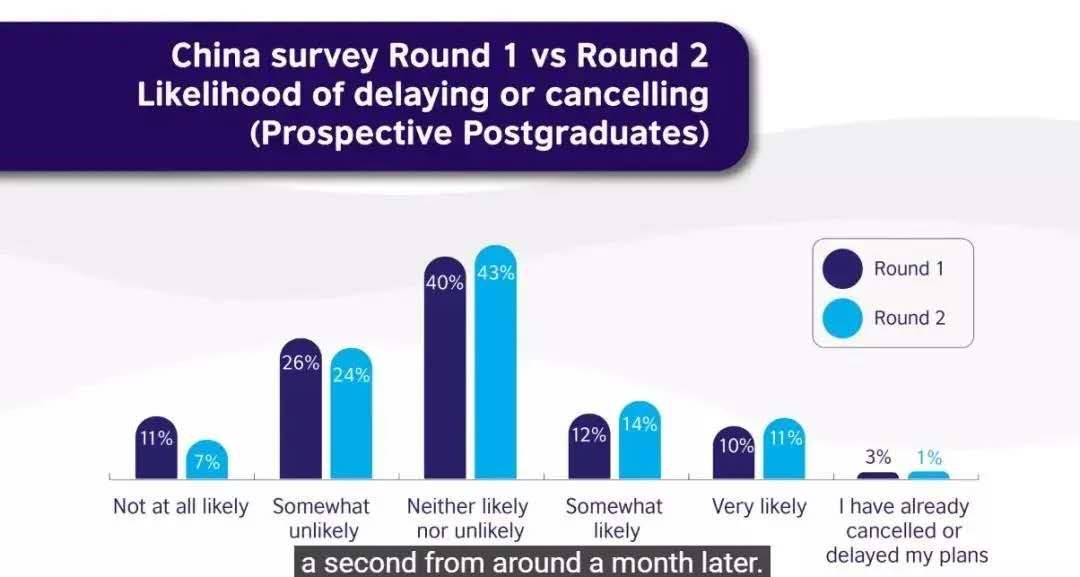托福听力出现复杂句式如何秒懂?5个实例具体分析重点要点,今天小编给大家带来了托福听力出现复杂句式如何秒懂,希望能够帮助到大家,下面小编就和大家分享,来欣赏一下吧。
托福听力出现复杂句式如何秒懂
1)反问句
Isn’t that just for when you need help with writing/, like an essay or research paper? (TPO24-C2)
同学们一听就会知道是个问句,以及会听到writing、research paper这些词,但会感觉开头有点快,这一点主要因为发音快导致不易辨认清楚。本句其实是Isn’t just for sth.这种反问句句式,在听的方面主要是区分isn’t that和is that的发音;在理解上就要注意反问句所表达的偏强调的意思。
2)强调句
But actually, it was a physicist/ who came up with a method that was a breakthrough. (TPO15-L3)
这句话较简单,主要是同学们容易听懂了仍然不清楚这是强调句型it was sb. who…,而这个句型基本上是初中语法知识,但你看,作为用得少的典范,就容易反应不出,即使它再简单。
3)插入语
So the original hypothesis/ that the stones found with sauropods were gastroliths/, even though it hasn’t been supported/, has helped us to make new hypothesis/, which may eventually lead to the answer. (TPO27-L3)
这句话比刚才的难度要大,首先要判断出that引出同位语,指hypothesis,所以从the original hypothesis到gastroliths是主语,根据我们上一期文章提到的抓“核心主谓宾”的方法,要有意识抓谓语动词。接着听到even though,这个时候就要召唤语法预判能力了,因为even though固定搭配“虽然…但是…/即使…也…”,所以even though引导的都是让步从句,我们仍然要抓主句,也就继续等待刚才“the original hypothesis…gastroliths”主语部分之后的谓语动词出现,此后我们听到has helped…确定谓语动词。到此为止,主干部分已经清楚So the original hypothesis…has helped us to make new hypothesis。最后which引导定语从句修饰new hypothesis,较简单。
另外本句要注意听出hasn’t been supported, has helped的否定和肯定,否则逻辑仍会混乱。本句语法成分较多:同位语,插入语,定语从句,但相对最难的是插入语。
4)被动句
It was presented in the works of well-known Greek philosophers/ as early as the fourth century B.C.E. (TPO21-L1)
本句如果第一遍没听懂,则要在精听中的第二遍听主干,也就是核心主谓宾:It was presented…再在第三遍抓里面的细节,也就是其他介词引导的部分;其中注意连读works of,as early as;本句为大家也用得相对较少的被动句句式。
5)倒装句
Only after the site at Gonur-depe was excavated/ were archaeologists able to identify it/ as coming from Gonur-depe. (TPO28-L4)
本句首先听听前半部分有明显的停顿were,那么迅速判断only after…were是明显的倒装句。事实上本句很多同学看都不一定看得懂,这就考查语法功底的扎实程度了。
2020托福听力练习:石器时代人类烹煮食物
Chimpanzees spend about half their day chewing.
"And for context, think about how much time a day you spend chewing."
Daniel Lieberman, a professor of human evolutionary biology at Harvard University.
"So how did we make that transition, from spending most of our day or half of our day chewing, to spending less than five percent?"
Cooking certainly tenderizes food, making it easier to chew and digest.
But evidence for human cook fires goes back only about 500,000 years, if that.
And Homo erectus had already evolved weaker jaws, and smaller teeth, more than a million years before that.
So Lieberman and his colleague Katherine Zink began their investigation by recreating a paleolithic dinner:yams, carrots, beets… and goat meat.
"If you were to try to eat some raw goat with your teeth you would find that you would chew and chew and chew, it's like bubblegum."
Lucky volunteers got to experience that, by chewing the food.
Either in its wild, un-tenderized state, or after it was bashed or sliced with Flintstonian tools.
As the study subjects ate, the researchers monitored the frequency and force of each chew.
And they found that a diet of abundant, pre-sliced meat, with a side of pounded root vegetables, might have saved Homo erectus two and a half million chews a year.
Meaning: less need for big, bulky jaws and teeth.
The research is in the journal Nature.
Of course, these days "processed food" has a pretty bad rap.
But for our ancestors, food processing was key.
"It's hard for people today to imagine what it was like to eat and cook and hunt during those times.
For the vast majority of our evolutionary history, our ancestors had to work pretty hard to chew their dinner."
Something for you to chew on, perhaps over dinner tonight.Chimpanzees spend about half their day chewing. 黑猩猩每天要在咀嚼食物上花掉将近一半的时间。
And for context, think about how much time a day you spend chewing. 相比之下,想想你每天花多少时间用来咀嚼呢?
Daniel Lieberman, a professor of human evolutionary biology at Harvard University. 哈佛大学的人类进化生物教授丹尼尔利伯尔曼说道。
So how did we make that transition, from spending most of our day or half of our day chewing, to spending less than five percent? 那我们是如何实现这种转变的呢?从一天吃东西花费大部分时间到现在大约不到5%的时间的呢?”
Cooking certainly tenderizes food, making it easier to chew and digest. 烹调确实让食物变得更软,更易咀嚼和消化。
But evidence for human cook fires goes back only about 500,000 years, if that. 但人类利用火进行烹调的证据只能追溯到大约500,000年前,如果的确如此的话。
And Homo erectus had already evolved weaker jaws, and smaller teeth, more than a million years before that. 而直立人进化出相对脆弱的下颌及小牙齿要比那个时候还早100万年。
So Lieberman and his colleague Katherine Zink began their investigation by recreating a paleolithic dinner: 因此利伯尔曼和他的同事凯瑟琳辛克通过重新还原旧石器时代的一顿晚餐开始了对此的调查研究:
yams, carrots, beets… and goat meat. 山药,胡萝卜,甜菜,还有山羊肉。
If you were to try to eat some raw goat with your teeth you would find that you would chew and chew and chew, it's like bubblegum. 如果你试着用牙齿直接吃生羊肉,你就会发现需要不停咀嚼,像在嚼泡泡糖一样。
Lucky volunteers got to experience that, by chewing the food. 参与这项研究的幸运志愿者们在咀嚼食物时有了这样的体验。
Either in its wild, un-tenderized state, or after it was bashed or sliced with Flintstonian tools. 不管是野生,未经烹调,还是通过打火石工具敲打切碎后的食物都是这样。
As the study subjects ate, the researchers monitored the frequency and force of each chew. 而随着研究对象的进食,研究人员们对他们每次咀嚼的频率和力度进行了检测。
And they found that a diet of abundant, pre-sliced meat, with a side of pounded root vegetables, might have saved Homo erectus two and a half million chews a year. 结果他们发现丰盛的一餐,肉类,根茎类蔬菜提前切好也许可以使直立人每年减少250万次咀嚼。
Meaning: less need for big, bulky jaws and teeth. 这就表明不需要巨大的,笨重的下颌以及牙齿。
The research is in the journal Nature. 这项研究已在《自然》杂志上发表。
Of course, these days processed food has a pretty bad rap. 当然,这些天加工食品的口碑不是很好。
But for our ancestors, food processing was key. 但对我们的祖先而言,食物加工处理可是关键性的一环。
We live such modern lives that it's hard for people today to imagine what it was like to eat and cook and hunt during those times. 我们现在过着这样的生活,而现在的人们很难想象在当时那种条件下吃东西、烹饪及狩猎是什么样子。
For the vast majority of our evolutionary history, our ancestors had to work pretty hard to chew their dinner. 在我们人类进化历史上很大一部分时间里,我们的祖先必须很努力的咀嚼自己的晚餐食物。
Something for you to chew on, perhaps over dinner tonight. 而对你而言,一顿晚餐或许要用一整晚才能搞定。
2020托福听力练习:蝙蝠免疫力抗击埃博拉病毒
When a virus invades your cells, it kicks your immune machinery into motion.
The first responders are signaling proteins, called interferons.
And they trigger downstream immune responses.
So you can kind of think of them as the hormones of the immune system.
They're triggered and then they stimulate a bunch of other immune responses that are more specific to that pathogen.
Michelle Baker, a comparative immunologist at the Australian Animal Health Laboratory.
In the spirit of comparative immunology, Baker and her colleagues looked at how another mammal—the black flying fox, a type of bat—handles infections.
They sequenced its immunity genes, and observed the immune response in normal bat cells.
And they found that, unlike us—the bats always have interferons on patrol.
Meaning the proteins do not wait to be activated by invaders.
And the researchers say that this constant state of high alert may be why bats can carry Ebola, Nipah virus, and a whole lot of other infections with no symptoms at all.
The findings appear in the Proceedings of the National Academy of Sciences.
So why not switch on those interferons 24/7 in humans?
Well in us, they also tend to cause lots of inflammation and cell damage.
Like the symptoms you feel from the flu—a lot of that is your immune system's fault.
But the key might be to do as the bats do.
"If we can just skew the response of our immune system so it triggers an antiviral response without the pro-inflammatory effects, then we might have something we can work with in terms of a novel therapeutic for humans."
Bats have long been known to harbor disease.
So it would be fitting if they also taught us how to fight it
When a virus invades your cells, it kicks your immune machinery into motion. 当病毒入侵你的细胞,免疫系统开始工作。
The first responders are signaling proteins, called interferons. 首先起作用的就是信号蛋白,它也被称为干扰素。
And they trigger downstream immune responses. 而它会触发下游免疫反应。
So you can kind of think of them as the hormones of the immune system. 因此你可以把它们想象成免疫系统的荷尔蒙。
They're triggered and then they stimulate a bunch of other immune responses that are more specific to that pathogen. 免疫系统开始工作后,就会刺激一系列针对病原体更具体的其他免疫反应。
Michelle Baker, a comparative immunologist at the Australian Animal Health Laboratory. 米歇尔.贝克尔是澳大利亚动物卫生实验室的比较免疫学家。
In the spirit of comparative immunology, Baker and her colleagues looked at how another mammal-the black flying fox, a type of bat-handles infections. 本着比较免疫学理论,贝克尔和她的同事们对其它哺乳动物蝙蝠的一种,黑狐蝠应对感染的方式进行了观察。
They sequenced its immunity genes, and observed the immune response in normal bat cells. 研究人员对免疫基因进行了排序,并观察了正常蝙蝠细胞的免疫反应。
And they found that, unlike us-the bats always have interferons on patrol. 而结果他们发现,与我们人类所不同的是,蝙蝠体内的干扰素一直在起作用。
Meaning the proteins do not wait to be activated by invaders. 这代表着蛋白质不需要等待入侵后才开始激活。
And the researchers say that this constant state of high alert may be why bats can carry Ebola, Nipah virus, and a whole lot of other infections with no symptoms at all. 而研究人员称这种持续的高警戒状态可能是蝙蝠携带埃博拉病毒、尼帕病毒及其它感染性疾病但却没有出现任何症状的原因。
The findings appear in the Proceedings of the National Academy of Sciences. 这项研究已在《美国国家科学院院刊》上发表。
So why not switch on those interferons 24/7 in humans? 那为何不激活人体内的干扰素呢?
Well in us, they also tend to cause lots of inflammation and cell damage. 对人类的身体而言,这样会引起大量炎症并造成细胞损伤。
Like the symptoms you feel from the flu-a lot of that is your immune system's fault. 免疫系统缺失就像感染流感病毒一样。
But the key might be to do as the bats do. 但关键在于我们如何模仿蝙蝠。
If we can just skew the response of our immune system so it triggers an antiviral response without the pro-inflammatory effects, then we might have something we can work with in terms of a novel therapeutic for humans. 如果我们只是让自身免疫系统发生偏差,这样就可以在没有任何炎症的情况下抗击病毒,因此我们可以利用这种新方法治疗人类疾病。
Bats have long been known to harbor disease. 一直以来人类就知晓,蝙蝠可以免疫于疾病。
So it would be fitting if they also taught us how to fight it. 因此如果我们通过这些小动物学会怎样抗击疾病,那就再好不过了。





